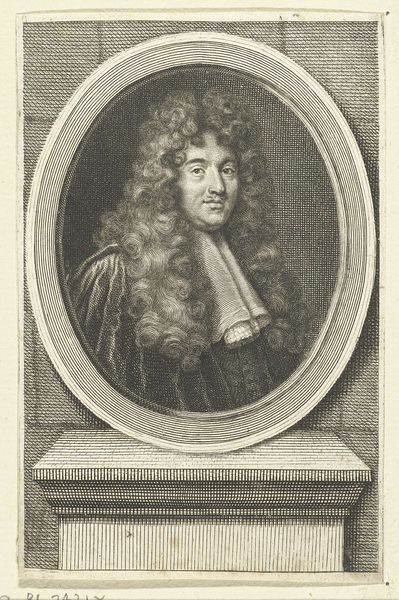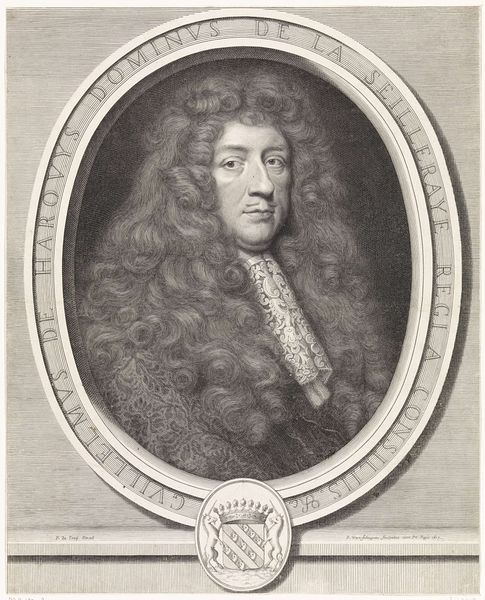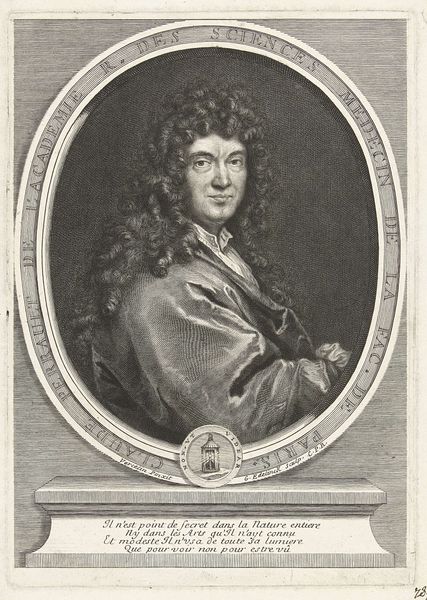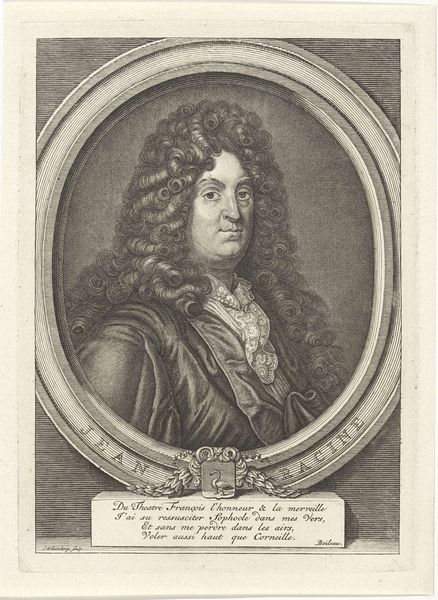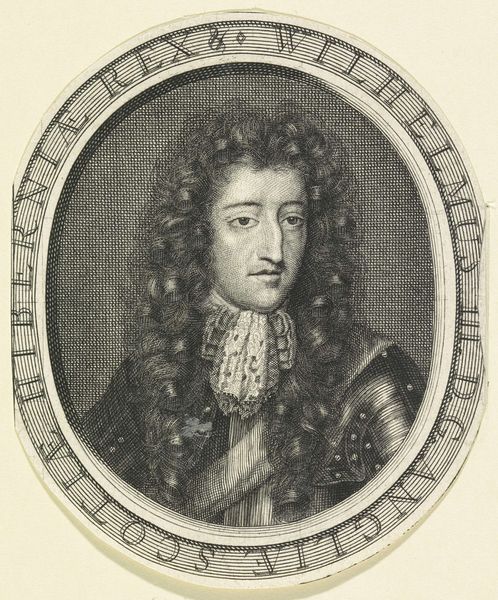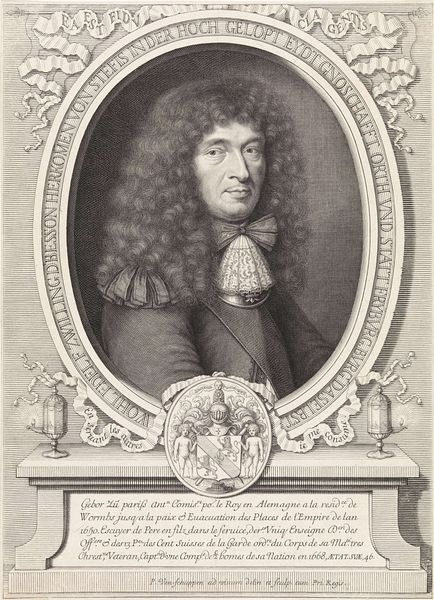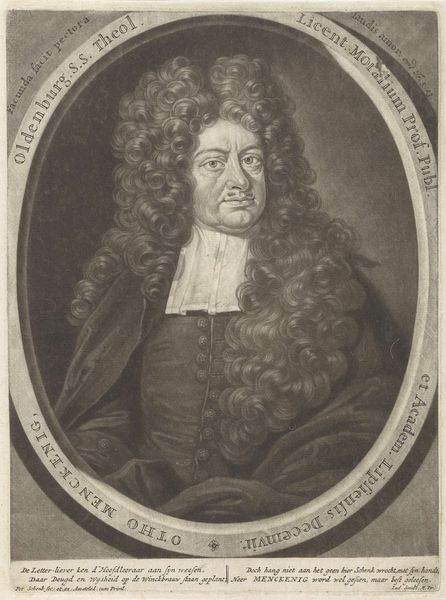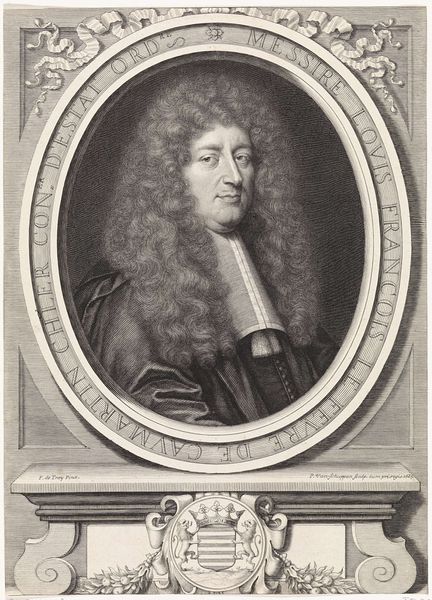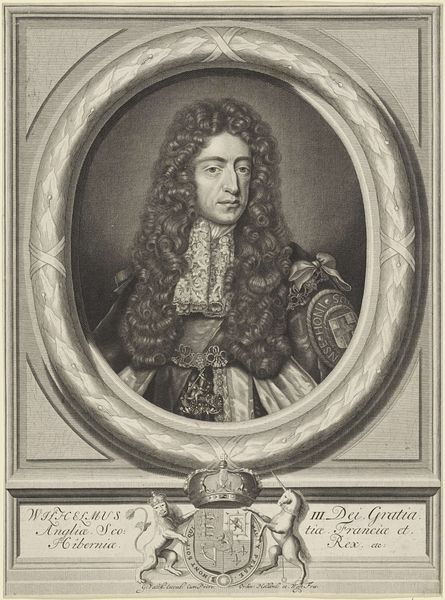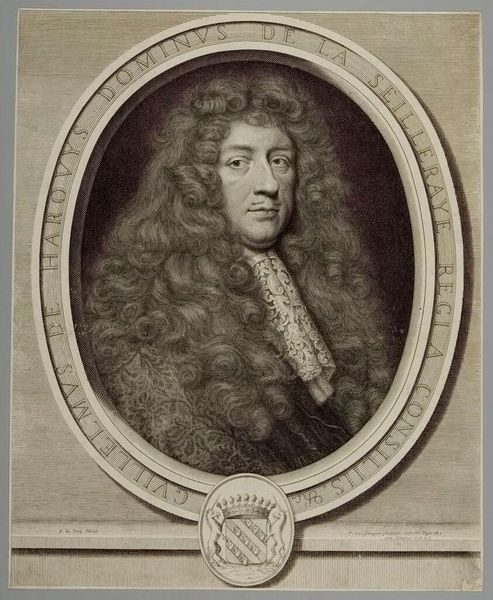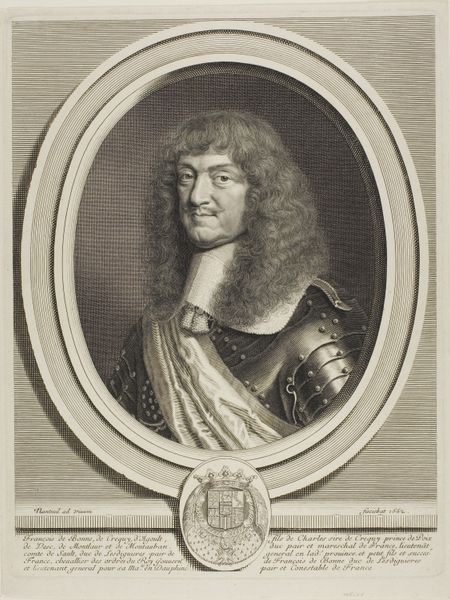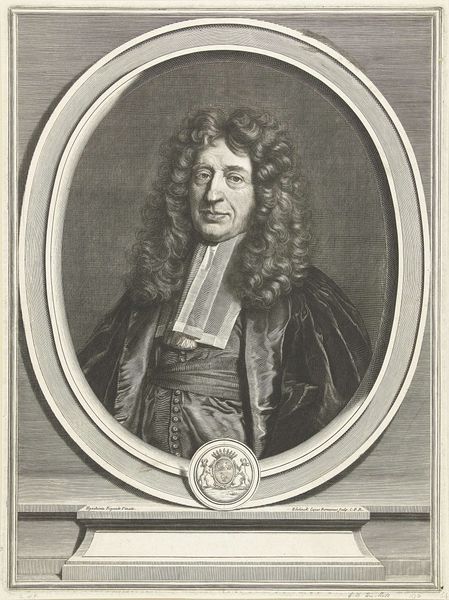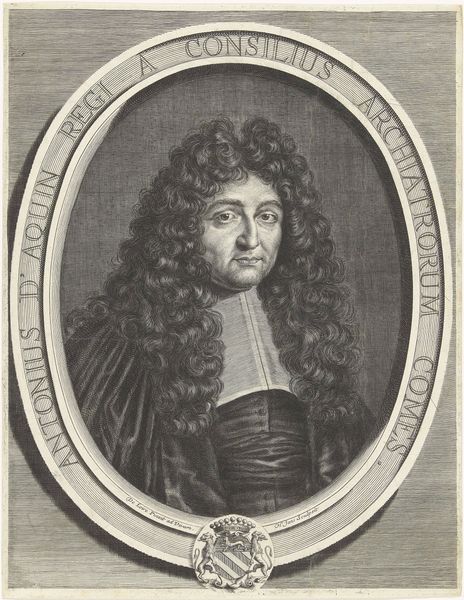
Portret van François-Michel le Tellier, markies van Louvois 1666
0:00
0:00
pietervanschuppen
Rijksmuseum
engraving
#
portrait
#
baroque
#
history-painting
#
engraving
Dimensions: height 346 mm, width 269 mm
Copyright: Rijks Museum: Open Domain
Curator: Before us is Pieter van Schuppen's 1666 engraving, "Portret van François-Michel le Tellier, markies van Louvois." It's currently held at the Rijksmuseum. Editor: It exudes power, doesn't it? That dark, cascading wig and the lace collar scream opulent authority. Even in monochrome, the textures look incredibly rich. Curator: Van Schuppen’s handling of line is masterful. Note the way the light falls across le Tellier’s face, achieved solely through variations in the density and direction of engraved lines. It creates a very lifelike quality, imbuing the subject with a clear presence. The artist also has an interesting framing: an oval, floral frame topped by what looks like ribbon, plus the Marquis' coat of arms below. Editor: Absolutely. And situating this within the court of Louis XIV, we recognize le Tellier as his Minister of War. That's pivotal! His ruthlessness in military reforms and expansion shaped France's dominance. Looking at him now, in this staged portrait, one must remember the sheer violence this man enacted. This portrait romanticizes a figure complicit in massive human suffering. Curator: I can appreciate that contextual overlay. From a purely aesthetic vantage, it's a fantastic display of Baroque portraiture, prioritizing grandeur, dynamism, and, yes, an idealization of the subject. Consider how the composition directs your eye inexorably toward le Tellier’s face; that intense, somewhat vacant gaze, is the anchor. Editor: It's *because* of that artistic mastery that it is all the more seductive, all the more effective as propaganda. The Marquis looms over us, immortalized not just in history but as a cultural artifact meant to legitimize and aggrandize the power he embodied, and that’s problematic. We're seduced by beauty obscuring culpability. Curator: I see it as a testament to van Schuppen’s skill. He took what was surely a commissioned piece and elevated it to an object of intricate beauty that, irrespective of subject, stands alone. Editor: And yet, we can't uncouple artistic execution from the cultural and historical impact, the portrait becomes a site of both aesthetic appreciation and critical examination, forcing us to acknowledge uncomfortable truths about power, representation, and collective memory. Curator: Fair enough. I can appreciate a good socio-historical reading as long as one still appreciates the lines. Editor: And I appreciate the aesthetic qualities so long as they help us understand the subject’s influence within complex narratives.
Comments
No comments
Be the first to comment and join the conversation on the ultimate creative platform.
